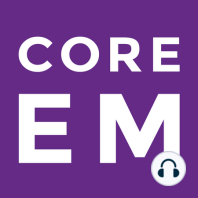20 min listen

Episode 162.0 – Stevens-Johnson Syndrome/Toxic Epidermal Necrolysis
Episode 162.0 – Stevens-Johnson Syndrome/Toxic Epidermal Necrolysis
ratings:
Length:
10 minutes
Released:
May 6, 2019
Format:
Podcast episode
Description
A look at this deadly mucocutaneous reaction and how to best manage these patients in the ED
https://media.blubrry.com/coreem/content.blubrry.com/coreem/SJS.mp3
Download
Leave a Comment
Tags: Critical Care, Dermatology
Show Notes
Rash with dysuria should raise concern for SJS with associated urethritis
Dysuria present in a majority of cases
SJS is a mucocutaneous reaction caused by Type IV hypersensitivity
Cytotoxic t-lymphocytes apoptose keratinocytes → blistering, bullae formation, and sloughing of the detached skin
Disease spectrum
SJS = <10% TBSA
TEN = >30% TBSA
SJS/ TEN Overlap = 10-30% TBSA
Incidence is estimated at around 9 per 1 million people in the US
Mortality is 10% for SJS and 30-50% for TEN
Mainly 2/2 sepsis and end organ dysfunction.
SJS can occur even without a precipitating medication
Infection can set it off especially in patients with risk factors including HIV, lupus, underlying malignancy, and genetic factors
SATAN for the most common drugs
Sulfa, Allopurinol, Tetracyclines, Anticonvulsants, and NSAIDS
Anti-epileptics include carbamazepine, lamictal, phenobarb, and phenytoin
Can have a curious course
Hypersensitivity reaction can develop while taking medication, or even one to four weeks after exposure
In pediatric population, mycoplasma pneumonia and herpes simplex have been identified as precipitating infections
Patients often have a prodrome 1-3 days prior to the skin lesions appearing
May complain of fever, myalgias, headaches, URI symptoms, and malaise
Rash may be the sole complaint
Released:
May 6, 2019
Format:
Podcast episode
Titles in the series (100)
Episode 4.0 – Perimortem C-Section, Procedural Sedation and Airway Pearls: Episode 4.0 features pearls on perimortem C-sections, procedural sedation and an interview with Reuben Strayer on Airway NightmaresRead More by Core EM - Emergency Medicine Podcast